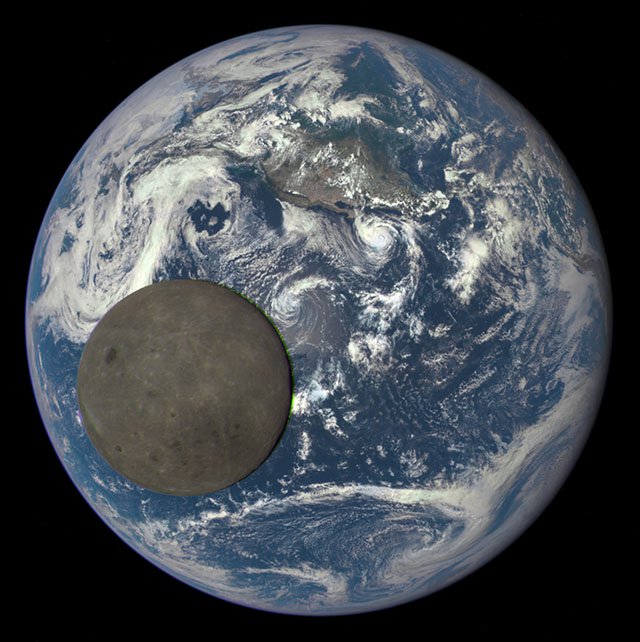
What would iconic space probe photos of celestial bodies in our solar system look like if they had been shot with an ordinary smartphone camera? Astronomer Scott Manley made this 12.5-minute video that explains the answer, which is: “not much.”
The beautiful photos of planets and moons that you’ve seen were captured with specialized cameras on spacecraft that are much more like telescopes than like iPhone cameras.
For example, in August 2015, NASA shared a beautiful photo of the Moon passing in front of Earth that was captured by the camera on its DSCOVR Earth observation satellite.
![]()
But this photo was captured from a mind-boggling distance of nearly a million miles from Earth.
![]()
“The field of view of your typical everyday camera that you would find in a smartphone is about 60 degrees,” Manley says. “The camera onboard the DSCOVR spacecraft is called EPIC and it has a field of view of less than one degree. And of course that field of view is optimized because it’s designed to look at the Earth and little else.”
Manley shows various examples of the large distances famous shots were actually taken at using NASA’s Eyes on the Solar System, a free app that “lets you explore the planets, their moons, asteroids, comets and the spacecraft exploring them from 1950 to 2050.”
“This project started out as an idea to take classic, famous images from space history and try and redesign them, reframe them so that they would have the same look as if they were taken with an iPhone,” Manley says. “But I very quickly realized that the field of view of most cameras mounted on spacecraft was so tiny, so minuscule that what we would really be left with was a tiny small disc of light suspended in a giant black background.”

